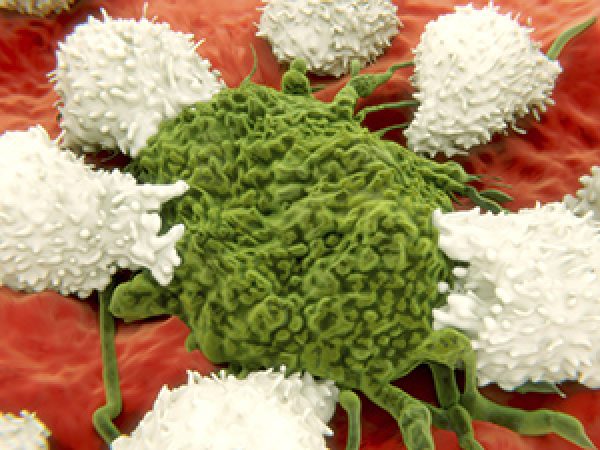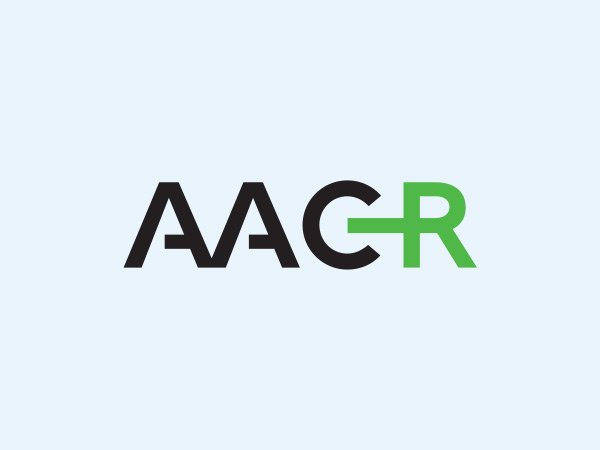Hematologic Malignancies, Melanoma Experts Meet to Share Ideas
Rarely do investigators in two distinct fields of cancer research have the time to come together for an evening dedicated to learning about each other’s work and developing new connections. But this is exactly what happened Sept. 21, when attendees at two of the American Association for Cancer Research’s (AACR) special conferences—Hematologic Malignancies: Translating Discoveries to Novel Therapies and Advances in Melanoma: From Biology to Therapy—held a joint session titled “Clinical Science Intersections between Melanoma and Hematologic Malignancies.”

Kenneth Anderson, MD, speaks to researchers at the joint session on hematologic malignancies and melanoma in Philadelphia last weekend. This photo and cover photo by Amy Baran, PhD, for the AACR.
“Collaborations are central to driving progress in any field of research,” said Kenneth Anderson, MD, chairperson of the Hematologic Malignancies special conference and director of the Jerome Lipper Multiple Myeloma Center and LeBow Institute for Myeloma Therapeutics at the Dana-Farber Cancer Institute in Boston. “They provide opportunities for sharing knowledge and ideas, sparking innovation.
“Multidisciplinary collaborations can be particularly fruitful, which is why we were incredibly excited by the chance to partner with our colleagues in the field of melanoma research,” continued Anderson, who is also the Kraft Family Professor of Medicine at Harvard Medical School and a member of the AACR Board of Directors.
At large multidisciplinary meetings such as the AACR Annual Meeting, researchers working in different areas often attend sessions with a focus outside their field. However, in those situations, it can be very hard, especially for early-career investigators, to get fully up to speed with unfamiliar topics and to form lasting relationships with peers who have expertise in other disciplines.
Smaller meetings, such as the AACR’s special conferences, allow investigators to delve deeply into more defined fields of research and to build collaborations with others working in similar areas. This is vital for progress in a field, but of equal importance is an outside perspective—who doesn’t find it easier to critique a friend’s manuscript than one’s own?
The concurrent timing of the Hematologic Malignancies and Advances in Melanoma special conferences in Philadelphia gave the chairpersons a unique opportunity to identify an innovative approach to foster new knowledge and creative ideas about how to further progress against these diseases. They took full advantage of the opportunity and developed a joint session that highlighted themes that are garnering attention in both fields: the power of immunotherapy and signaling through the Ras pathway.
The scientific portion of the session was preceded by a short presentation from Wendy K. D. Selig, president and CEO of the Melanoma Research Alliance. Selig talked about the importance of multidisciplinary research and how it holds the power to accelerate the pace at which scientific discoveries are translated into treatments that can transform the lives of patients.
One patient who has benefited from advances in the treatment of hematologic malignancies and attended the joint session is Jack Whelan from Andover, Massachusetts. Whelan, who was diagnosed seven years ago with Waldenström macroglobulinema—a rare form of non-Hodgkin lymphoma—was an invited speaker for the Hematologic Malignancies special conference earlier in the day, providing participants with a patient perspective. “I was surprised to learn how many molecules and pathways come into play when treating these very different malignancies, and even more surprised to learn that there are many small-molecule and biological agents that can be used to treat and manage these diseases,” Whelan said of the joint session.
“Once I learned about the similarities, the idea for the joint session made a lot of sense. I think there was real value to getting scientists and clinicians together to explore opportunities to cooperate and perhaps expedite discoveries and development of new therapeutics,” continued Whelan, who was recently featured in the AACR Cancer Progress Report 2014.
“The session was a tremendous success,” said Anderson. “The presentations were cutting edge bench to bedside studies, and investigators from the two conferences allowed for further interchange and exchange of ideas. This interchange and sharing of knowledge within hematologic and solid tumors provides the framework for expediting progress, collaborative strategies, and more rapid translation of these scientific advances to our patients.”



